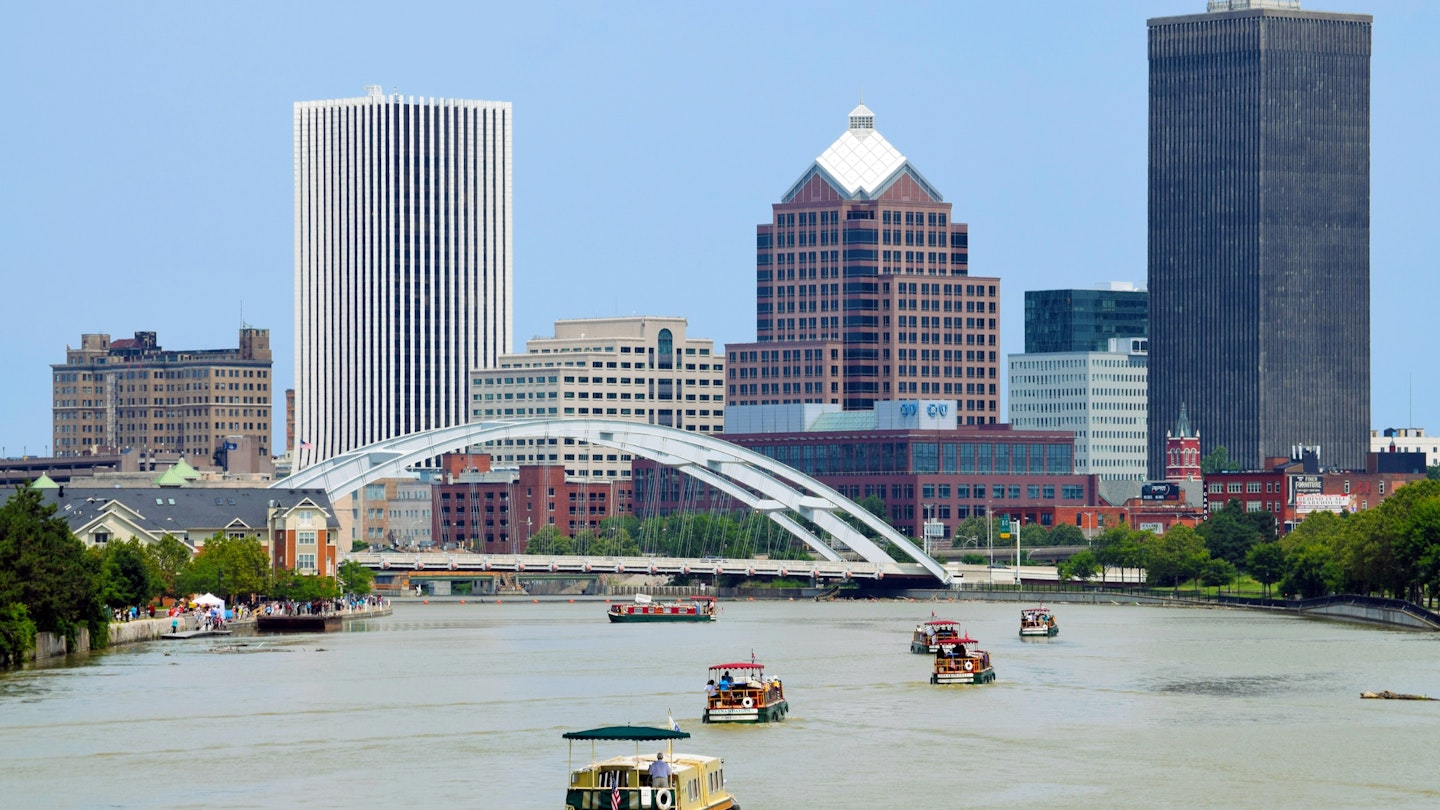Visitors speeding across the New York Thruway from the Big Apple to Niagara Falls might be tempted to zip past Rochester, New York. However, this gateway to the Finger Lakes region is the third-largest city in the state and is currently experiencing a historic renaissance.

Nestled at the intersection of the Genesee River and Erie Canal, these historic waterways served as the original highway for social, political, and intellectual movements. Frederick Douglass printed the abolitionist newspaper “The North Star” from his downtown office, and Susan B. Anthony led the women’s suffrage movement from her house off Main St. In 2020, Rochester became Suffragist City, celebrating the centennial of the passage of the 19th amendment guaranteeing women the right to vote and Anthony’s 200th birthday.

The Epicenter of the Women’s Suffrage Movement
Downtown Rochester’s National Susan B. Anthony Museum & House at 17 Madison Street was the civil rights leader’s home from 1866 until her death in 1906. The house served as headquarters for the National American Woman Suffrage Association, and its parlor was the site of Anthony’s famous arrest for voting for Ulysses S. Grant in the 1872 Presidential Election.
During tours, docents practically bring the house and the suffragist to life – highlights include the desk where Anthony wrote, her furniture, papers, photographs, and the silk brocade dress she wore at many appearances and speeches. These items ignite a visitor’s curiosity to learn more about Anthony’s life on the front lines of history and weave a complex narrative full of nuance regarding her work for women’s voting rights, abolition of slavery, education reform, and her intricate relationship with Frederick Douglass.
“As the nation focuses on the significance of the Centennial Anniversary of the 19th Amendment in 2020, Rochester and Susan B. Anthony will be at the center,” says Deborah L. Hughes, President & CEO of the National Susan B. Anthony Museum & House. Events planned by the museum will celebrate women’s voices as well as the importance of voting rights and civil discourse – issues as relevant now as they were more than a century ago.

Living History at a 19th-Century Historic Village
The Genesee Country Village & Museum just outside Rochester offers a broader perspective on the community during the mid-19th century while the fight for women’s suffrage was ongoing. It’s the largest living history museum in New York State and the third largest in the country. This venue features more than 65 buildings and a staff of knowledgeable costumed interpreters.
“Visitors of all ages will find something to educate and entertain them here,” states Becky Wehle, President & CEO of Genesee Country Village & Museum. Activities include sampling craft brew from a working 19th-century brewery, meeting baby animals on the farm, making a punched-tin ornament, playing traditional games on the Village Square, or simply rolling down the grassy hill of the Great Meadow.
The highlight might be the historic village at the center of the 600-acre property, which preserves many historical homes and buildings, including Kodak founder George Eastman’s boyhood home, built circa 1840.

A Cradle of Photography, Entrepreneurship, and Philanthropy
Eastman, the pioneer of popular photography, made a lasting impact in Rochester, nurturing a high quality of life for Kodak employees at the turn of the 20th century. Consequently, the city hosts a thriving arts community with nearly 60 cultural organizations—many attributed to Eastman’s philanthropy such as the University of Rochester’s Eastman School of Music, one of the top music schools in the country.
Film and photography enthusiasts should not miss the George Eastman Museum, regarded as the world’s oldest photography museum and film archives. The collection includes a permanent history of photography, rotating contemporary art exhibits, and one of the few movie theatres in the world that shows nitrate films.
From May through October 2020, visitors can explore the intersecting histories of photography and women’s suffrage in the History of Photography Gallery. George Eastman’s historic mansion and gardens are also part of the museum, providing a unique glimpse into life during the Women’s Suffrage Movement.

The Most Fun Museum in the World?
For families with children, Rochester has another world-class attraction—the Strong National Museum of Play, showcasing the world’s largest collection of toys, dolls, and games. With numerous hands-on, interactive exhibits and play spaces for all ages, as well as the National Toy Hall of Fame and World Video Game Hall of Fame, it’s recognized as one of the premier children’s museums in the country.
The Strong is set to open a state-of-the-art expansion in 2020 that will include shops and a hotel. This new expansion will introduce Rochester’s Neighborhood of Play, a walkable green urban community where people can live, work, and…play.
With millions of dollars invested into multiple projects downtown, Rochester is entering a phase of rapid revitalization. The city is the first in the nation to convert a sunken expressway into an elevated community street—complete with bicycle and walking paths. Moreover, the downtown area is transforming its riverfront by completing the Genesee Riverway Trail through Center City and redesigning several parks along the water. Combined with the city’s rich history, museums, cultural organizations, and new restaurants and nightlife options, there are ample reasons to put Rochester on your travel radar.





